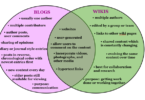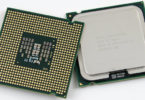Optical Disk vs Hard Disk
Summary: Difference Between Optical Disk and Hard Disk is that optical disc is a type of optical storage media that consists of a flat, round, portable disc made of metal, plastic, and lacquer. While hard disk is a storage device that contains one or more inflexible, circular platters that use magnetic particles to store data, instructions, and information.

Optical Disk
An optical disc is a type of optical storage media that consists of a flat, round, portable disc made of metal, plastic, and lacquer. These discs usually are 4.75 inches in diameter and less than one-twentieth of an inch thick. Optical discs primarily store software, data, digital photos, movies, and music. Some optical disc formats are read only, meaning users cannot write (save) on the media. Others are read/write, which allows users to save on the disc just as they save on a hard disk.
Nearly every personal computer today includes some type of optical disc drive installed in a drive bay. On some, you push a button to slide out a tray, insert the disc, and then push the same button to close the tray; others are slot loaded, which means you insert the disc in a narrow opening on the drive.
With some discs, you can read and/or write on one side only. Manufacturers usually place a silk-screened label on the top layer of these single-sided discs. You insert a single-sided disc in the drive with the label side up. Other discs are double-sided. Simply remove the disc from the drive, flip it over, and reinsert it in the drive to use the other side of the disc. Double-sided discs often have no label; instead, each side of the disc is identified with small writing around the center of the disc. Some drives use LightScribe technology, which works with specially coated optical discs, to etch labels directly on the disc (as opposed to placing an adhesive label on the disc).
Optical discs store items by using microscopic pits (indentations) and lands (flat areas) that are in the middle layer of the disc. A high-powered laser light creates the pits. A lower-powered laser light reads items from the disc by reflecting light through the bottom of the disc. The reflected light is converted into a series of bits the computer can process. Manufacturers claim that a properly cared for high-quality optical disc will last 5 years but could last up to 100 years.
Hard Disk
A hard disk is a storage device that contains one or more inflexible, circular platters that use magnetic particles to store data, instructions, and information. The system unit on most desktop and notebook computers contains at least one hard disk. The entire device is enclosed in an airtight, sealed case to protect it from contamination. A hard disk that is mounted inside the system unit sometimes is called a fixed disk because it is not portable. With respect to a storage medium, the term portable means you can remove the medium from one computer and carry it to another computer.
Current personal computer hard disks have storage capacities from 160 GB to 2 TB and more. Home users store documents, spreadsheets, presentations, databases, e-mail messages, Web pages, digital photos, music, videos, and software on hard disks. Businesses use hard disks to store correspondence, reports, financial records, e-mail messages, customer orders and invoices, payroll records, inventory records, presentations, contracts, marketing literature, schedules, and Web sites. Traditionally, hard disks stored data using longitudinal recording, which aligned the magnetic particles horizontally around the surface of the disk. With perpendicular recording, by contrast, hard disks align the magnetic particles vertically, or perpendicular to the disk’s surface, making much greater storage capacities possible. Experts estimate that hard disks using perpendicular recording provide storage capacities about 10 times greater than disks that use longitudinal recording. Hard disks are read/write storage media. That is, you can read from and write on a hard disk any number of times.
Also Read:
Difference Between CDR and CDRW
Difference Between Optical Disk and CD
Difference Between DVD-R and CD-R
Difference Between Recordable and Rewritable DVDs







Leave a Comment
You must be logged in to post a comment.